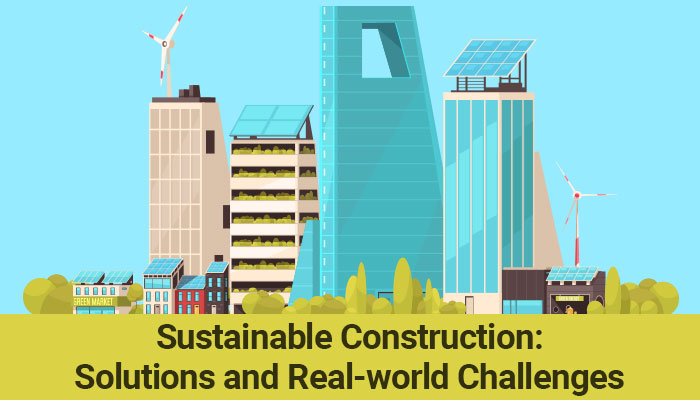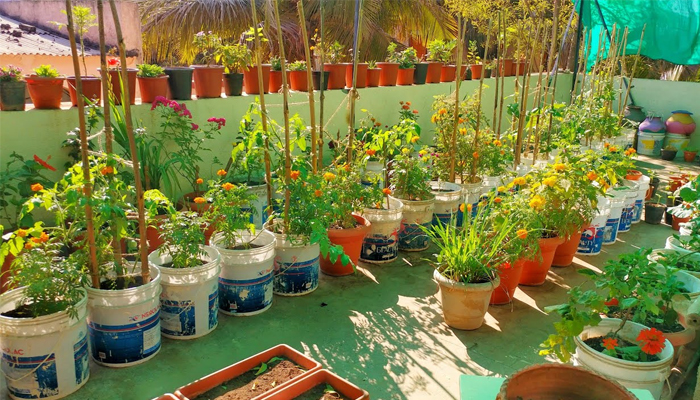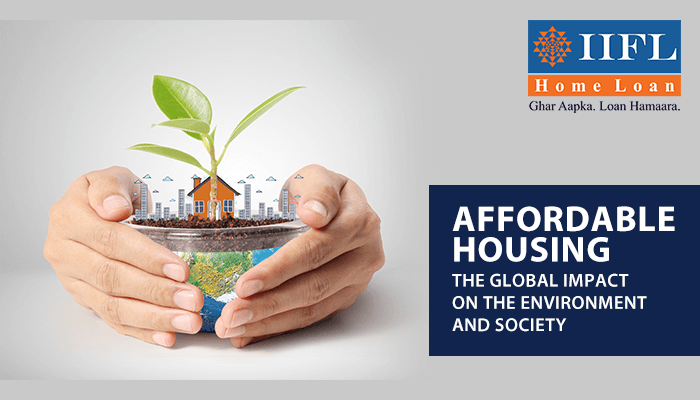New Solutions in Green Construction
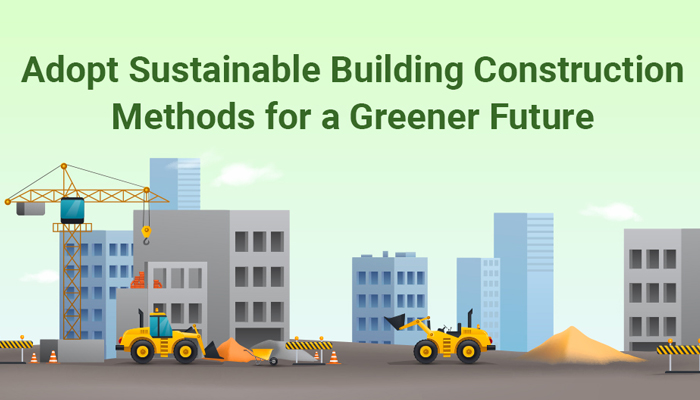
Look out for new solutions in Green Construction coming your way!
Building construction causes a lot of carbon dioxide emissions. Reducing it is a big priority today as we talk about a sustainable future.
The low-hanging fruit is the reduction in the quantities of steel and cement concrete – which incur very high emissions of carbon dioxide – or have high embodied energy. Reinforcement steel and cement concrete and walls can account for approximately 70 % of the total embodied energy of construction in the conventional method of Reinforced Concrete Cement (RCC) frame construction.
So, we need to look at structural systems for walls and roofs which economise on steel and RCC.
The other big opportunity is to replace burnt clay brick which incurs high carbon emissions with Fly Ash block and Compressed Stabilised Earth block (CSEB) which incur at least 30% less carbon emissions.
If we combine these two opportunities, we can reduce the carbon emissions of construction by 30% as compared to the usual RCC frame with burnt clay brick infill.
Confined Masonry
Most walling materials and walls built with bricks or blockwork have some compressive strength. They can be load bearing walls. Before steel and reinforced concrete became the ‘standard’ practice, buildings were built on load bearing walls. Many buildings up to three-storeys in height are being built with load bearing walls today. The concern with the traditional load bearing constructions is that, in earthquake prone places, the load bearing construction needs to be strengthened to resist the horizontal forces that can occur during an earthquake. The solution is CONFINED MASONRY.
This is how it works:
The walls are raised on a strip foundation with a plinth beam. At every 3 metres and at the corners, a 200 mm space is left for a nominally reinforced RCC column which is tied into the plinth beam. The concerting of the column is done after the wall has been raised. The column reinforcement is tied into the roof slab. No deep RCC beams are required. We now have an RCC network that is integrated with the wall. This system is able to resist the horizontal earthquake forces.
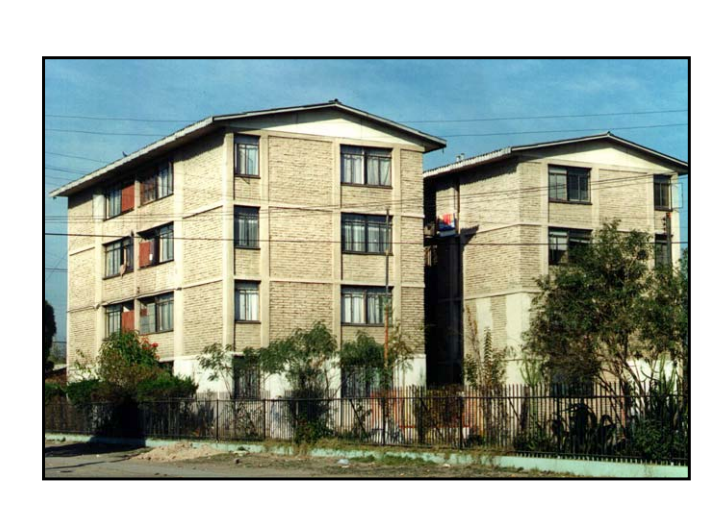
The consumption of reinforcement steel is reduced by about 15% compared to a conventional RCC frame structure. You can build up to four storeys using confined masonry. The walls can be of burnt brick, fly ash blocks, compressed stabilised earth blocks or any other blockwork that has adequate compressive strength. Here is a useful link:
(PDF) Confined Masonry The Current Design Standards ...
https://www.researchgate.net › publication › 335679507_...
Walling material
Good quality, solid fired clay brick incurs very high carbon dioxide emissions.
The new variant is a hollow fired clay brick, which is as strong, but uses 50% less clay and requires 30% less firing energy.
This hollow clay block is made by a precise extrusion process. It saves on the plaster thickness for internal and external plasters. Additionally, it has good insulation value – about the same as that of Autoclaved Aerated Concrete Block or AAC Block. It provides far better protection from the heat outside compared to all solid block masonry systems. This will be an excellent walling material.
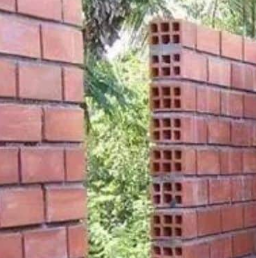
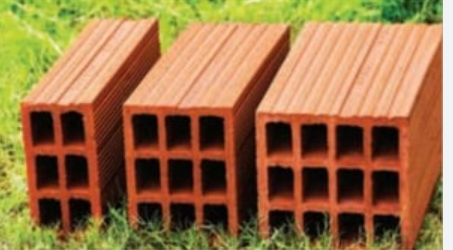
From the point of view of reducing the carbon in walling systems, Compressed Stabilized Earth Blocks (CSEB) is the best, followed by Fly Ash Block. Gradually, CSEB manufacturers who can make standard strength blocks by precise control on soil and cement mixes are coming in the market. This is a promising green material of the future.
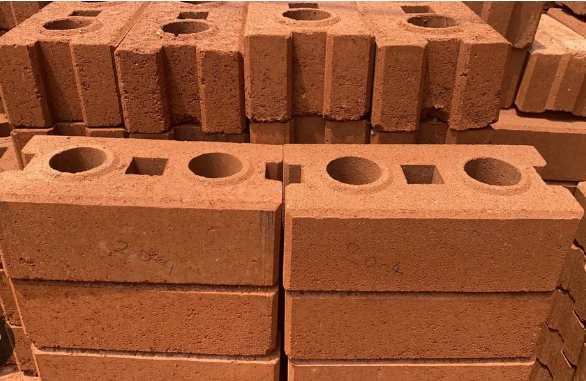
Compressed Stabilised Earth Block
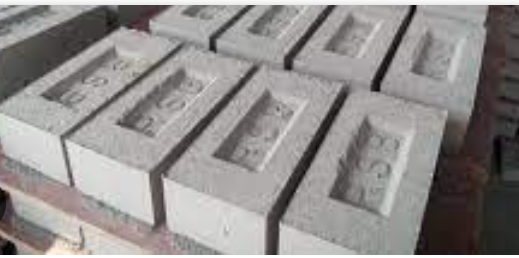
Fly Ash Block
Floor Slabs and Roofs
In conventional RCC construction, most of the steel is consumed in the floor slabs that span across the walls and beams. Can we cut down on this steel consumption?
Yes! Here are a couple of methods for short span buildings where the spans are not more than 3.5 meters. This works for affordable housing.
These are one-way span systems.
Shallow Barrel Vault
You can build a shallow barrel vault using bricks and mortar. NO STEEL! The vault geometry is segmental (part of a circle). The springing end of the vault rests on an RCC beam which holds the vault. The crown of the vault is raised one-sixth or one-seventh of the width of the vault. A single layer of bricks is laid radially over an accurately shaped formwork in an interlocking fashion. Mortar is filled firmly in the joints and some stone chips are pressed into the joints. The vault is cured for 15 days and the formwork removed. Walls are raised over the beams and the sides are filled with waste/lightweight material to make a flat floor. The structural work that is done in conventional construction by cement concrete with steel reinforcement is now performed by brick and mortar.

The bricks can be of fired Clay, fly Ash or CSEB of an appropriate strength.
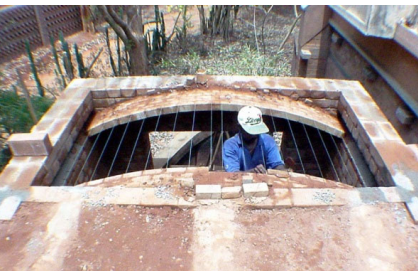
This system reduces the carbon emissions of construction of the suspended floors drastically, especially if you use Fly Ash Block or CSEB. It replaces steel and concrete. It is Green.
Suspended floor slabs with Precast T beams with hollow concrete block infill
In this system, the T beams are prestressed and use only stretched 6mm bars as reinforcement. Between two T beams, hollow concrete blocks, or hollow clay blocks, called Hourdi, are placed. Steel reinforcement network of 8mm bars at say 200mm centres both ways is placed on top and M20 concrete to 50 mm thickness above the blocks is poured. The system is quick to build. It is lighter than a conventional RCC slab and therefore, its steel consumption is about 30% less. It is cheaper, uses less material, and saves on steel. It is Green.

Tee beam supporting the hollow block, topped by lightly reinforced concrete.
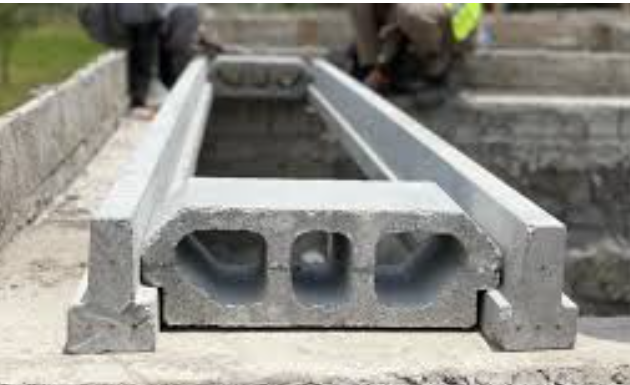
Using a pre-stressed beam
Here the beam is not pre-stressed
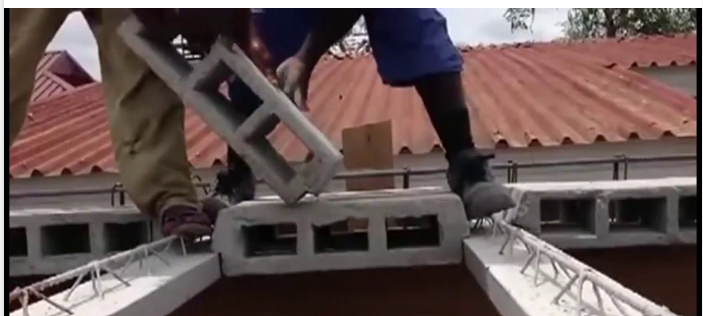
So, to sum up ….
-
We need to reduce the carbon emissions of construction from the prevalent method of RCC frame with brick infill walls.
-
The biggest contributor to carbon emissions is steel, followed by cement.
-
We need to reduce the steel intensity of structural systems. We can make earthquake-safe four-storey, tall and affordable housing with 25 kg of steel per square meter of floor area.
-
The solution lies in adopting structural systems that are less steel intensive.
-
We can also choose walling materials that incur less carbon emissions than fired clay brick.
Look out for the solutions shown in this blog. They are on their way to the market. They are the future!
Tags
Disclaimer: The information contained in this post is for general information purposes only. IIFL Home Finance Limited (including its associates and affiliates) ("the Company") assumes no liability or responsibility for any errors or omissions in the contents of this post and under no circumstances shall the Company be liable for any damage, loss, injury or disappointment, etc. suffered by any reader. All information in this post is provided "as is", with no guarantee of completeness, accuracy, timeliness, or of the results, etc. obtained from the use of this information, and without warranty of any kind, express or implied, including, but not limited to warranties of performance, merchantability, and fitness for a particular purpose. Given the changing nature of laws, rules, and regulations, there may be delays, omissions, or inaccuracies in the information contained in this post. The information on this post is provided with the understanding that the Company is not herein engaged in rendering legal, accounting, tax, or other professional advice and services. As such, it should not be used as a substitute for consultation with professional accounting, tax, legal or other competent advisers. This post may contain views and opinions which are those of the authors and do not necessarily reflect the official policy or position of any other agency or organization. This post may also contain links to external websites that are not provided or maintained by or in any way affiliated with the Company and the Company does not guarantee the accuracy, relevance, timeliness, or completeness of any information on these external websites. Any/ all (Home/ Loan Against Property/ Secured Business Loan/ Balance Transfer/ Home Improvement Loan/ NRI Home Loan/ Home Loan for Uniformed Services) loan product specifications and information that may be stated in this post are subject to change from time to time, readers are advised to reach out to the Company for current specifications of the said (Home/ Loan Against Property/ Secured Business Loan/ Balance Transfer/ Home Improvement Loan/ NRI Home Loan/ Home Loan for Uniformed Services) loan.
 Login
Login









